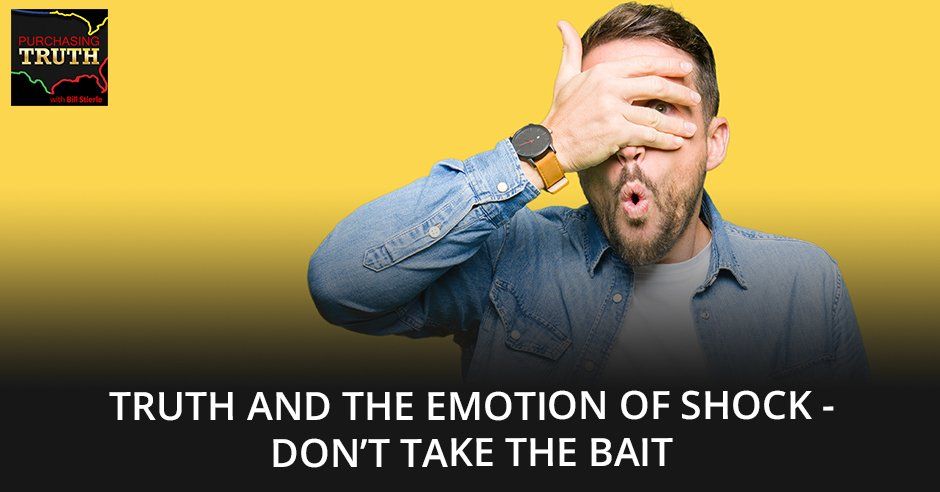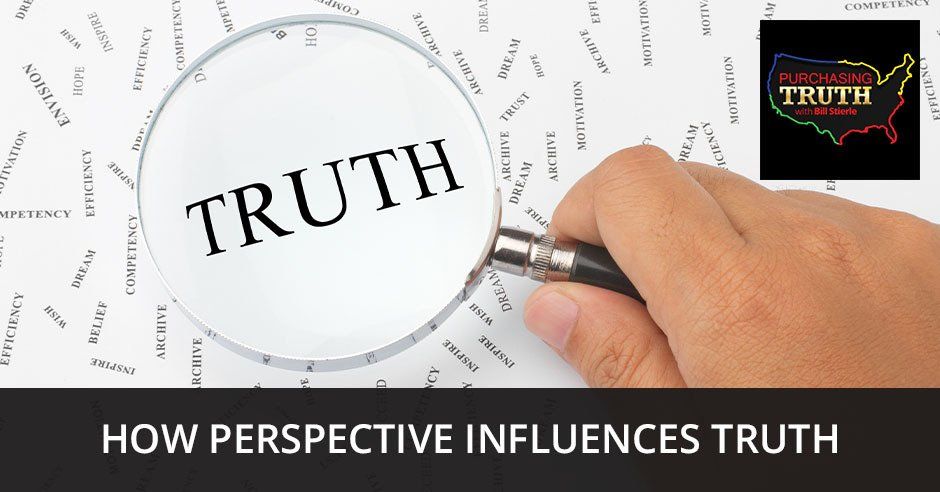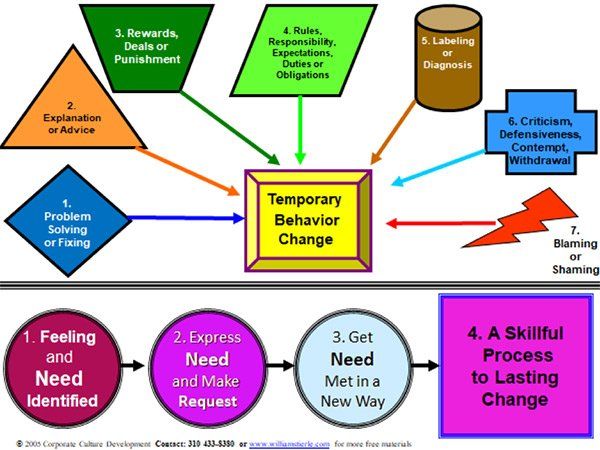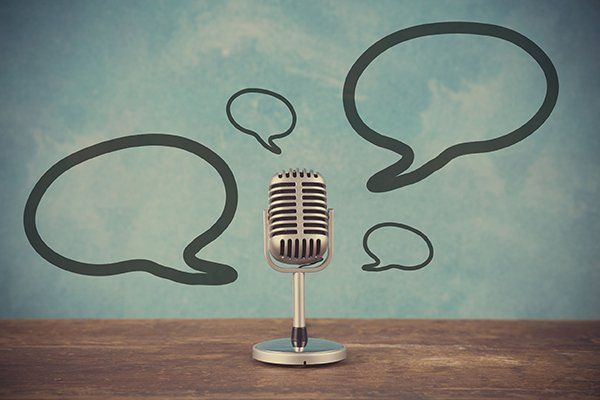Diving Deeper On Each Of The Seven Kinds Of Language
Subscribe Today!
Language is a powerful tool that anyone can use in all aspects of life. In politics, it is either used well or abused smartly. In another interesting episode, Bill Stierle and Tom continue their quest of Purchasing Truth, and this time they impart to us the seven different language types and how language patterns can create a temporary behavior change. With the right tools, anyone can understand how to deal with the language in times of distress and breeze through conflict. Bill and Tom discuss some rules and laws, how they can be skewed, and be created to get down to what the truth is. Peeling through the seven language styles and categories, they show how it can relate to the way politicians like Donald Trump and John McCain present themselves to the nation.
---
Watch the episode here
We talked with the audience or at least tease them a bit about these seven different language types. The ways of using language and the different behaviors that are the results of them. It’d be a great thing to share with them what those seven different kinds of language are. As an overview, we’ve already taken a deep dive into one of them. We’ll continue to do it with some others but it would be helpful for everyone to explain what we were talking about last time in that regard.
The thing I like best about this section we’re going to do is I spent time trying to break language apart. We were able to see where the conflict was coming from. What type of conflict language pattern that a person could get triggered or activated by? All of a sudden, the fight isn’t about what the issue is. The fight is about the language choice. That’s how the truth is getting hijacked a little bit. It is a fight about the language choice, which is a little bit surprising but that’s a little bit of what’s happening with the way the truth is working. It’s important to understand where the language is getting hijacked. Labels and diagnosis is one of these seven languaging patterns that escalate conflict.
What I like to do is walk through them so that at least people can see them. We can even do a deeper dive on each one as we go forward. You could poke a stick at it which you do very well. Throw me some challenges so that we can actually see how this roll-out and how to be able to say different things to these things to deescalate the conflict or to get to the truth. A big part of what you and I are working on is giving people some tools to understand how to deal with language in the upsets and to walk through conflict a lot easier and with large compassion.
To get to the truth, that’s a great way to talk about it. From a perspective of understanding how in America we’ve gotten to where we’ve gotten in our society, and how there may be a path forward to reconcile and to find the truth again. That’s important for a lot of people. A lot of people are looking for how do we go forward in this society where the truth has been hijacked or at least for a lot of the country.
How the truth gets so that you can call somebody out on it. It doesn’t mean that the person that’s going for that point of view is wrong or bad. It means that the person is using a language pattern that is going to escalate the other person. If the other person sees it, they don’t have to get escalated and go like, “You’re using that pattern and I guess you’re meaning this by it.” That’s what you’re trying to make a point about, “I can agree at that point. Meanwhile, by the way, you left the truth over here. Let’s go back to that now.” All of these different languaging patterns create the temporary behavior change. Whatever conflict a human being has in life, you could see how this different languaging patterns will work. They will only work temporarily and only attain a short-term gain.
Can a short-term gain repeatedly done become a longer-term effect? It feels like there’s a repeated pattern. We see this happen almost in our daily news cycle.
That’s one of the dangers about a repeated message. That repeated message is saying, “This is what the absolute is.” That becomes the truth or belief in the person. Now the person has a false truth in their head. They can’t get rid of it because they have an investment in it. The person kept hitting the button all the time what the belief is. They want to have the loyalty of that. There have been many people in history on the good side and the bad side that have repeated a message over and over again in order to get a group of people to move in the direction of that message.
Not to take us away from these seven ways to use language because we definitely want to get to that, but it’s so present in the news now. The fact trackers have been tallying everything up. It’s made a lot of news and they’re generous in how they’ve been saying it that now more than 10,000 times, Trump has either misrepresented the truth or misstated the truth. Essentially, what they’re saying is he’s lied more than 10,000 times in messages he delivers. To the point where I feel like America is almost becoming numb to it to a degree. It doesn’t fall with as much weight on people. I remember for example, in contrast when Brian Williams, the former NBC anchor for Nightly News, got caught in a couple of very specific lies and lost his job over it. Now, the President of the United States is normalizing hijacking the truth. How do we get there?
It’s marketing and branding, that’s how we got there. It’s saying an extraordinary thing about a nominal or minimal product. I’m going to say something extra-ordinary about this product or service. It’s only going to give you a modest result. The results may vary. See how that sentence I stuck it in there? The truth is this truth might not be your truth. It might not deliver what I’m promising you right now because results may vary. The truth case around the Supreme Court case Papa John’s versus Pizza Hut. “Better ingredients, better pizza.” Pizza Hut said, “No, they don’t. We have better ingredients. We have better pizza.” They took it all the way to Supreme Court on the word “better” and they lost.
Pizza Hut challenged the assertion in the brand message that their ingredients are better and they lost. Was it on a free speech grounds or what was the reason?
Speaking truth to power doesn't mean that you have to try to advocate your truth over other’s truth.
CLICK TO TWEET
The Supreme Court said, “We are not going to dictate to the consumer what we think is better because better has to do with the person’s taste. It doesn’t have to do with the word choice.” We’re not going to legislate truth on that Papa John’s slogan, “Better ingredients, better pizza,” because that was the problem. Papa John’s put their logo next to pizza and said, “Better ingredients, better pizza.” Pizza Hut said, “No, it’s not.” The damage was already done because they already put them next to each other. Pizza Hut goes, “We lost the battle,” but the war for marketing and branding showed up as, “You can call a lot of things better that aren’t really better.”
I’m sure it didn’t fall on very informed or objective ears because all the general consumer heard is, “Papa John’s won. They have better ingredients and better pizza.”
We’re not going to legislate better. The challenge then is that is a great example of how truth can get hijacked because this is what the new rule is. We’re going to talk about rules and laws, how they can be skewed and be created in order to get down to what the truth is. Let’s take a look at these seven languaging styles and categories and peel them back a little bit to show how a temporary behavior change can show up. The temporary behavior change is the target of this language. This languaging patterns work. They temporarily solve but the most important thing is that these language patterns are reinforced in a sequential way.
A person, depending on the household they were brought up in, the amount of TV they watch, the school that they went to, they are going to be focused and they’re going to be boiled in the soup of this style of language. If you’re brought up in a household with two professors, you’re going to have a different languaging style than being brought up in a household of two construction professionals. You’re going to have different language if you’re brought up with two police officers. I’m making up both the parents as police officers to show there’s a double saturation of that job there. That doesn’t usually happen but there are definitely two people. There are probably two or three different languaging patterns coming out of that environment.
I’m thinking and wondering about the effect on my children because my children have grown up in a house of two people that were educated as artists. We’re professional artists and designers. That’s what we went to school for and we see things through that lens. I sure approach language a bit differently because of that. I can relate to how you grow up, who your parents are and how they think changes a lot of this.
#1 And #2: Problem-Solving And Fixing
You’re going to start chuckling because there are many things where you’re going to say, “I do that. That’s why it doesn’t work with my kid. No wonder why I’m getting pushback from my kid. Now I see why my wife gives me pushback on that. I need to change that sentence because it’s a gerbil wheel. I say the sentences and she is guaranteed to say the sentence back to me.” It’s going to get weird quick in a good way. The first language pattern that’s accepted and reinforced in our society is the language pattern called problem-solving and fixing.
Our instructional system focuses on this as one of the two primary languaging patterns that relies upon. We’re going to get the right answer in the shortest amount of time. That’s a theme that happens in most instructional institutions, multiple choice test and get the right answer. If you don’t get the right answer, then we’re going to go to number two. We’re going to give you an explanation and advice on why you needed to think about the right answer. Tom, have you ever given somebody the answer and then the person then turns around and explains to you why your answer wasn’t right?
That’s a banter between number one and number two. Notice now we’re arguing on who has the right answer. We’re not even considering that there might be a third possibility yet. We’re taking two beliefs and we’re arguing between, “I think it’s this. Let me explain to you and give you the advice about why it’s not true and I’m going to bring you some evidence.” “Let me show you the good reason why my answer is right. There’s this one case that proves that this is not true. What about this?”
There is a banter between these two things. What winds up happening is as the argument or the discussion increases, then regrettably, a third languaging pattern comes in and gets put into the mix. For example, if you give your kids problem-solving or a fixing answer and say, “We can’t have ice cream. It’s 4:45 and we’re going to have dinner in fifteen minutes.” You’re caught in an explanation of why ice cream before dinner is not a good thing to do because it’ll kill their appetite. They couldn’t give a crap about whether it’s killing their appetite at all.
#3: Rewards, Deals, Or Punishment
Because of the way the language works, number three languaging pattern comes in. That’s rewards, deals or punishments. All of a sudden, I’m making a deal about ice cream and they’re trying to make a deal with me about ice cream, “Can I have a little bit?” We throw in the reward after dinner. Their reward for eating dinner. How much intention are they going to have on that green bean that they’re eating when they’re thinking about ice cream showing up next? It’s more likely that green bean stays on the plate.
They want to eat the minimum of what they need to get the reward.
See what you did? That’s exactly what happens to our mentality, just do the minimum to help. If a government official promises or a politician promises something and then puts the bill up and the bill gets voted down, they get to say, “I did what I said I was going to do. You didn’t see the results of that but I fought for it.” All of a sudden, we’ve got a big problem with rewards, deals and punishments. The false or misleading sentence gets caught in, “I am going to fix this problem. I am going to explain that I have the best people in order to fix the problem. I am going to make a series of deals. I am the best deal-maker ever. I even wrote the book.” All of a sudden, we’re wondering how we got here.
#4: The Bribe
This is how we got here is that, “I am going to talk about the problem and say I have the answer to a complex problem. I’m going to be very light on explanation and I’m not going to put one policy out for anybody to poke a stick at. I am a great deal-maker and because I’m a great deal-maker, I can get these real or imaginary things done.” All of a sudden here comes what’s called a bribe.
Number three is also called the bribe. These are three forms of bribe, “I am going to give you a reward.” “Make America Great Again” is a bribe. It is a deal. It is an enticement. As soon as I say the word enticement, I’m in marketing and branding again. I am in promotion of my product. “By the way, you know those things that keep getting in the way? I’m going to do something about those.” What is he going to do something about those? The rules, responsibilities, duties and obligations.
“I’m going to break the rules. I can break rules. I’m good at getting through this because I’m the best deal-maker and the deal-makers are against the rules. I want to get rid of those regulators because those regulators sit here at position four.” These four languaging patterns here are the most significant languaging patterns that are accepted in our society. The rules are where the criminality is. Here are some spiritual rules. Here are some moral and ethical rules and here are some legal rules. They’re all sitting in this category right now.
That’s where the black and white thinking is because rules are either right or wrong or you’ve broken them or you haven’t.
What happens if you get rid of the rule then you’re not breaking it? You could say that you’re doing it but you’re breaking it because you’re not doing it.
Are these four of the most commonly used language patterns then as a result?
Yes, and reinforced. The whole school system gets stuck here. Problem solving, they give explanation and then all of a sudden, they go into reward or deal-making situations. Since you get here, a person moves into temporary compliance. They only do the minimal amount to get the reward. This is called while you passed second grade, here’s your trophy. It’s not a full reward. If you’re building a sense of accomplishment into it and a sense of learning before, if you’re showing something specific that’s happening, that is not a reward. If you are giving a reward for the completion of something, then it is a reward very well and then the person stops doing it. These are the four accepted ones.
This is the structure of the languages that’s holding us into this pattern. I keep throwing it onto the language that’s holding us in this pattern. You’ll see that there’s big blank space underneath that’s not filled in. That’s where we’re going to after we get done with the next three things. You can see the first four are very accepted in our society. Bribe your kid, bribe your spouse, rules, here are the agreements that you’re going to live by and don’t break those agreements. There’s also no discussion because I am now stuck in these four different things and I can’t move off of it.
#5: Label And Diagnose
If you break a rule, if you don’t fit in an expectation that I have, if you don’t fulfill your duties then number five is going to show up. That number five is label and diagnose. We’re going to diagnose you as being a bad person. We’re going to diagnose you as being a narcissist. We’re going to label you. We’re going to call you all kinds of labels, all kinds of diagnosis if you are not following these rules, if you are not getting in the systems of rewards, steals, and punishments, if you are not listening to my explanations, if you aren’t doing things the way I want to.
Hate speech has a label and diagnosis but it's respect for others is what the need is.
CLICK TO TWEET
You see how it collapses really quick now? It’s like, “Holy crap.” All of a sudden, our languaging patterns are only creating this temporary change thing. Meanwhile, what now happens is that the person then is supposed to listen to this label and diagnose and say, “Let me put that label around my neck and carry that around and then I’ll behave better.” It might sound like this, “Hi, I’m Bill, I’m an alcoholic.” “Hi, Bill. You’re an alcoholic.” That is a label and diagnosis. It only creates a temporary compliance or otherwise, the person would call themselves the label and never drink again, as if that ever happens.
I’m not saying that AA is not an organization that doesn’t support people in the addiction space. The language-based problem is who wants to call themselves an addict for the rest of their life? Many people don’t. If you have that as the front of your label and it’s a part of your identity, the rest of your self-worth and your identity is going to rebel against that and say, “No, I can make good adult choices.” All of a sudden, you turned into a four-year-old and now you’re drinking again because no one’s going to tell me what to do. I’m fighting a label instead of fighting the substance or fighting the cause underneath the behavior.
Can’t this label be used as a weapon by people to label others? Aren’t we seeing that happen in politics all the time? It’s like the President labels people routinely. There are twenty democratic John Does. Joe Biden is the latest one to announce and already Trump is going and labeling him as sleepy Joe and labeling himself as young and vibrant. He’s only fourteen months younger.
He has learned through his career and his childhood how to use language in order to engage the process of separation and differentiation. Separation and differentiation isn’t true. It’s claimed. Once you claim a separation and differentiation, you get to be the first one to own it. Even there were several moments between McCain and Obama where Obama would differentiate. Every time he differentiated, McCain was catching up. He was always behind it. All the discussion, the news cycle was going after Iraq. Obama says, “We need to go back to the source. Let’s go after Afghanistan.” That put him in the, “Yes, that’s what we were originally doing.”
All he did was go back to the thing that Bush had reinforced in order to get the war started. He took Bush’s message and made it his message. McCain was behind because the public didn’t want to talk about how messy Iraq was and there were no weapons of mass destruction. Nobody wanted to talk about the mistake anymore. Who was hung with the mistake was McCain because he was the one that stays in there and he’s labeled and diagnosed as the guy that was behind. Is this getting a little weird or strange or what?
It’s eye-opening for sure.
I appreciate the eye-opening piece because when these different language patterns are used in combination with each other, it’s easy to hijack or purchase truth. It’s like, “I’ve got this labeled and diagnosed but the person isn’t doing what I want them to do.” The person is not becoming compliant. The word compliant is an interesting word to stick in here because many consumers are compliant, many voters are compliant and they stick their vote in the direction towards a false message or an untrue message. Let’s bring coal back then. We need to bring coal back. What’s wrong? Let’s get those coal. Those are good coal jobs. You want to do it. All they’re doing is tapping into the belief and identity of, “I was proud to be a coal worker because coal was the energy that ran the country for a couple of hundred years or so.”
The word is that they’re good coal people. To me, the interesting one is to say they’re good people that if you attack coal, you’re attacking the people which of course no one was ever doing. Everybody gets very defensive over these people. They want to protect them.
My father did it, my grandfather did it. It carried my family’s generation. It was all about how can we get the coal to work better? How can we get the production numbers up? How did that work? We were all behind that mission to get coal in order to run and build the nation. That was a necessary substance of power that was being used by the machinery and the industrial age. It’s tapping into a message that had been around for hundred years or so of the substance that made a difference. Meanwhile, the truth is natural gas took our coal and it continues to hit coal’s butt. That’s not even the cleanest thing we can use. It’s problematic how language is being used.
The energy industry is a great example. The coal is a great example. A more modern one that’s been playing out over my social media accounts is the fossil fuel industry demonizing the electric vehicle movement. This happened a few weeks. It’s what’s on my mind and I have a video which is very interesting. The assertion was made that electric vehicles are, from a CO2 perspective, worse than conventional diesel fuel cars. There’s been a marketing campaign to perpetuate that myth. Finally, I’ve found a definitive, very well-researched and presented case that’s not true for electric vehicles, regardless of where you live in the world and how your electricity is generated, even the mining of lithium for the batteries and the whole thing. That electric cars are not positive in terms of the contribution of CO2 to the atmosphere anywhere from one to three years. The very worst-case scenario is five years if you live in one of the dirtiest places on Earth where electricity is created in not a very clean way. That industry is another great example, especially the energy.
Now that we’ve got these ones here and we’ve already started muddying the waters with labels and diagnosis. As soon as you label and diagnose the person, if you don’t claim your own brand, someone else will brand you. All the Republican candidates, their butt got whipped because Trump branded them before they branded themselves. They thought a logo and a sign would make the difference. That’s all they need to do with the brand and keep repeating the message about whatever. Trump goes like, “No, I’m going to brand you and I’m going to brand you with a bunch of false things.” There was a partial truth that Hillary was sloppy and didn’t follow the rules regarding emails and email servers. There wasn’t enough on there to see that there was something dangerous that she said or did that was exposed, but there was a truth to what he was saying.
#6: Criticism And Defensive, Contempt, And Withdraw Language
Did it rise to the big truth of crooked? Not really. Were there mistakes and better choices that she could have made with different people in her political career? Yes, she got into relationship with people that she needed to then get distance from. They did some junky things and she had a conversation with them up to a relationship with them because they talked her into the relationship or they provided the deal. That gets us to number six. Number six is very challenging because as soon as labels and diagnoses don’t work, then I get to bring out criticism, defensive language and contempt language and withdraw language. I get to project that at others to muddy the waters with truth. The withdraw experience is one of the things that we keep experiencing back and forth with different talking heads.
That will come on, bring up criticism and defensiveness, then back away for a couple of months then come back and deliver a message of contempt and withdraw. They’ll do this cycle on the news cycle. They’ll come in, “This is what they did that was wrong,” criticism, “This is what my person did that wasn’t the same as their person.” They deliver a criticism message and then they bring up a defensive message about their things. You can watch this with Kellyanne Conway. What happens is the newscaster don’t know that they’re getting hooked in and they start coming from the position of contempt. That’s not true. Notice the contempt that’s showing up. That’s not what’s being said and they get a contemptuous posture that makes them look bad.
It doesn’t even happen when they say, “You haven’t answered my question, Kellyanne.” Isn’t that part of contempt? They fall right into this trap.
#7 Blaming And Shaming
They fall into the trap because now it’s criticism versus contempt. It’s defensiveness versus withdraw. How does the newscaster get stuck with withdraw? They get stuck holding the bag of stopping the conversation. They get hold in the bag. I was listening to something and it was following this pattern. I go like, “Who is going to say the sentence that’s going to click us to number seven? Which one? Which side is going to say it because whoever says it loses?” Whoever says the next one of these new next concepts, they’re going to lose. Here are the two concepts. The next two sentences that will show up are one of these two sentences. A blaming sentence or shaming sentence will come next. Whoever is doing it is holding the bag of poop. It’s a shame that they were going through this right now. Who’s to blame for this? That’s the one who’s holding the bag or the listeners going like, “How did we get here?”
Using Kellyanne Conway as an example is a good one because it happens almost daily. I watched something, where she definitely misstated the truth on something. The person interviewing her, I think it was Jake Tapper or somebody, tried to call her out on it but she’s constantly blaming the Democrats for everything. She’s getting away with blaming in that situation. The interviewer was left holding the bag.
What happens is the label called fake news is reinforcing because they’ve driven the narrative over to five, six and seven. It driven the narrative over here. The viewer is watching the label “fake news,” watching her bringing criticism. What happens is Jake says, “I’m going to defend truth,” instead of doing something much more powerful.
Let’s take our audiences through this as an example. I remember what it was now. The President said it and Kellyanne Conway was having to defend it. The President said that he had the “perfect response” to the Charlottesville white nationalists rally and everything he said following it. Jake Tapper was trying to get her to own that label that he had the perfect response or to contradict it. He’s trying to get her to take a stand one way or the other and she wouldn’t do it. She did and didn’t at the same time. She danced around it but eventually she did defend that it was the perfect response. He was trying to get to the truth of that was far from perfect. What would you have done differently in Jake Tapper’s position other than try to defend the truth?
It’s going to sound a little weird but use her language and the word choices that she’s picking, the defensive, the criticism, the label that she put, “You would like us to hear that his response was perfect.” She has to say yes. “You think that providing support and emphasis about Nazis being okay people is okay to do. The President’s interested in supporting that group of people.” She’s in trouble now because you’re using power with language rather than what he chose to do, which was called power over language.
What he was doing was trying to fact check her and get her to agree that on its phase, that statement was false. When if he approached it the right way with language and asking her better questions, she would box yourself in.
Within three sentences, she’s done. She can’t talk anymore. It’s a little weird for me to sit here with a lot of definitive energy because, “Why aren’t you out there and why aren’t you telling these people?” That’s a part of this show. It’s the reason why I’m not out there doing it, to talk about how speaking truth to power is not trying to prove your truth over their truth. Speaking truth to power doesn’t mean that you have to try to advocate your truth over their truth. It’s actually trying to draw out their partial truth so that everybody can see it’s a partial truth.
You shine light on it. You almost amplify the exaggeration. That’s brilliant though.
It will sound like this, “Kellyanne, you feel confident that the way he handled it was a perfect way. Is that correct?” “Yes.” “You like Americans to hear that the perfect way to response to people marching on ideals that are not in alignment with American ideals is okay because that’s a part of freedom of speech. Is that what would you like us to hear?” “Yes.”
She probably would still say yes to that, wouldn’t she?
She’s doomed. They’re going to use one part of the constitution against another part of the constitution. What an interesting concept. That’s rule number four against another one of the rules. What are the guidelines? We’re talking about morals and values and everybody gets to have those. It’s not criminal to march, is it? They say, “No, it’s not.” It’s also something from a branding and marketing place to put fuel on the fire of a value that’s not in alignment with the things that we’re trying to stand for. What I’m doing is I’m using her emotion, which is confidence. What she need is her identity and the value called freedom of speech. I’m going with her message and I’m shining a spotlight because, “From a freedom of speech perspective, it’s important for the President to support the freedom of speech. Tell me again, how is that value of being a Nazi, the same value that we stand for as Americans? We stand for the freedom of speech but how does the value of one person against another person a part of our value in the United States? Tell me how the President talks about that.”
She would be dumbfounded. She would change the subject in a hurry.
You would have to be ready for the next power with sentence. Let me show you what I’m doing there. I’m taking one of these criticisms or at least labels over here. I’m staying away from the blaming and shaming. I’m taking a criticism or label that she’s doing and maybe a rule that she’s going after. I’m putting it into the circle down here as she feels confident and she has a need to support a very important value called freedom of speech. I’m going to put those two things on. I’m going to speak to that and not get stuck in battling up here because all that’s going to do is put my advocacy against hers instead of going after what the truth is.
You would like us to hear the messaging and use our time together so that, “You know that President Trump is advocating for freedom of speech. Is that what you’d like us to hear?” “Yes.” “Is that a value that we want to stand for guarding speech and is this the best moral value for the President to stand for?” There’s a big trouble because what I’m doing is I’m talking about what is the greater need that we’re supposed to be talking about when we talk about the value sets of a Nazi and the value sets of hate speech.
Hate speech has a label and diagnosis but it’s respect for others is what the need is. “Kellyanne, don’t you think respect for others might sound a little bit different than that?”
She either has to turn and say, “You’ve got to have respect for Nazis.”
Let’s have a discussion about having respect for others. If one person is saying something disrespectful towards others and trying to separate or divide the country, wouldn’t it be better for us to have a respectful discussion about how freedom of speech and how we’re not in agreement with this value that this one person speaking from? Wouldn’t that be a better narrative that the President could be speaking from instead of being a person saying good people on both sides? Isn’t that not the strongest speech he could be using right now?
Was that the perfect response?
The perfect response that the President would have said is, “Everyone has the right to speak the way they want to and assemble the way they would like. I’m not in agreement with the speech that they’re saying because it doesn’t meet the higher values of the United States.” Wouldn’t that be the best thing? You’re dragging her down to the bottom of the line which is called the subtext of the conversation. We want a lasting change to show up. This is a skillful process down here. It’s that any one of these seven things can be dragged down into this first circle, anyone of these language tactics. Even if somebody gives you an advice that you don’t want, you can still drag it down here. Have you ever had someone, when you’re upset or something, someone gives you a piece of advice and you’re like, “I don’t want to hear it?” That’s problem-solving. Say this back and we’ll make it a little bit of poison so we can see it have a little bit of energy to it. Say this back, “Bill, you know what you should do is?”
Bill, you know what you should do is?
You gave me a little problem-solving. You’re going to give me some advice. Watch this, “Tom, you feel confident and you’re trying to contribute to me an answer that you think it would help. Is that correct?”
Yes.
I don’t have to take the thing that you said but I can name it for what it is as a contribution.
It’s to have you acknowledge it and almost made sure that they know they’ve been heard, but you’re not stepping in line to accept it either.
Most newscasters regrettably are trying to craft their language in an unwinnable argument with the top seven things with a skilled pundit. The pundit is coming in with a point of view. All the pundit is there for is to insert a confusing message or sentence that’s in advocacy of their position so that from a branding and marketing place, they’re just there to deliver a message. They’re not there to deliver truth. They’re there to deliver a point of view, not to deliver truth. That’s the thing that’s unsettling. What you talked as people develop a skill below and that’s the things that I train is how you take anyone of these seven messages here and bring it down below the line, then things tend to go way better.
I can clearly see how that would be. I hope our audiences are getting it as well. Make sure you watch the video where Bill has laid this out visually or we’ll also have a slide of all those seven language types and the subtext below as to how you can create a process of lasting change in a skillful way. I think it’s brilliant, Bill.
Thanks, Tom. I appreciate it. It took me a lot of years to get these buckets to exist in a way that people can understand them as well as how to language or communicate our way not to fight the battle up above, only to get a temporary behavior change. How do you connect to what the person is saying so that you can talk to and about truth in a more powerful way?
It’s mind-blowing. I would love to go on and discuss more and more examples. Are we going to be able to take a deeper dive into each of some of these in future episodes?
We’ll be able to take these out for a spin because that’s how truth gets skewed a little bit. You can’t have an argument around Thanksgiving or Christmas time without walking or stepping your foot in a pile of poop with any one of these seven things. The relative is going to launch one and then all of a sudden, it’s like all the errors of our childhood come out for a spin.
Bill, I think that I can see the path, the potential light at the end of the tunnel to whether you call it reconciliation or cooperation more and getting somewhere. Can you imagine if politicians would negotiate using language like this instead of trying to score the cheap point? I know there are reasons they sometimes try to score cheap points in the media and we’ve talked about some of them. We would get a lot more accomplished, wouldn’t we?
We would as well as media being trained in this way because this is not going away. On future episodes, we’ll get into this thing and we’ll go into how we can get this to go better.
Thank you so much, Bill.
Thanks, Tom.
Love the show? Subscribe, rate, review, and share!








